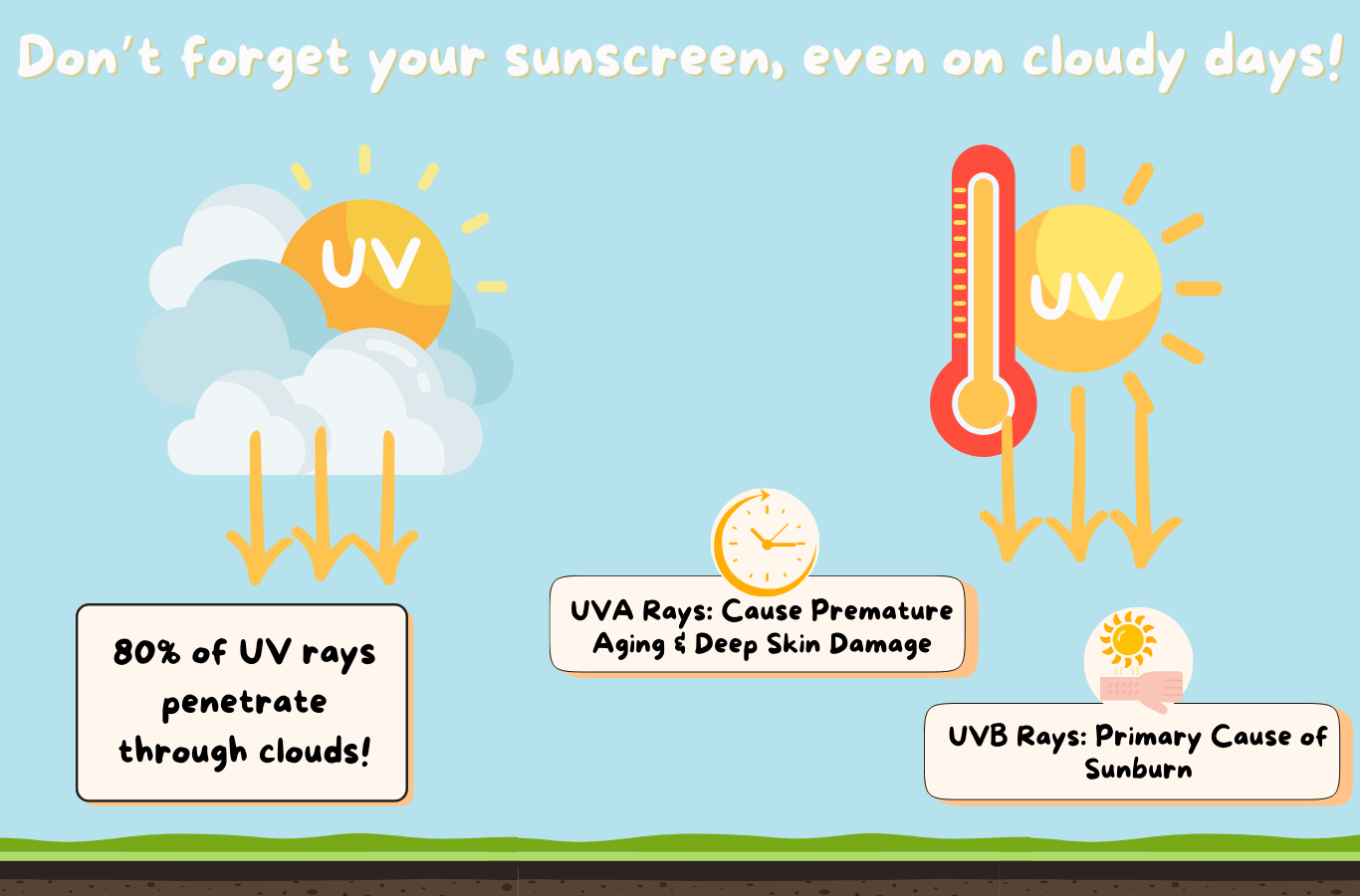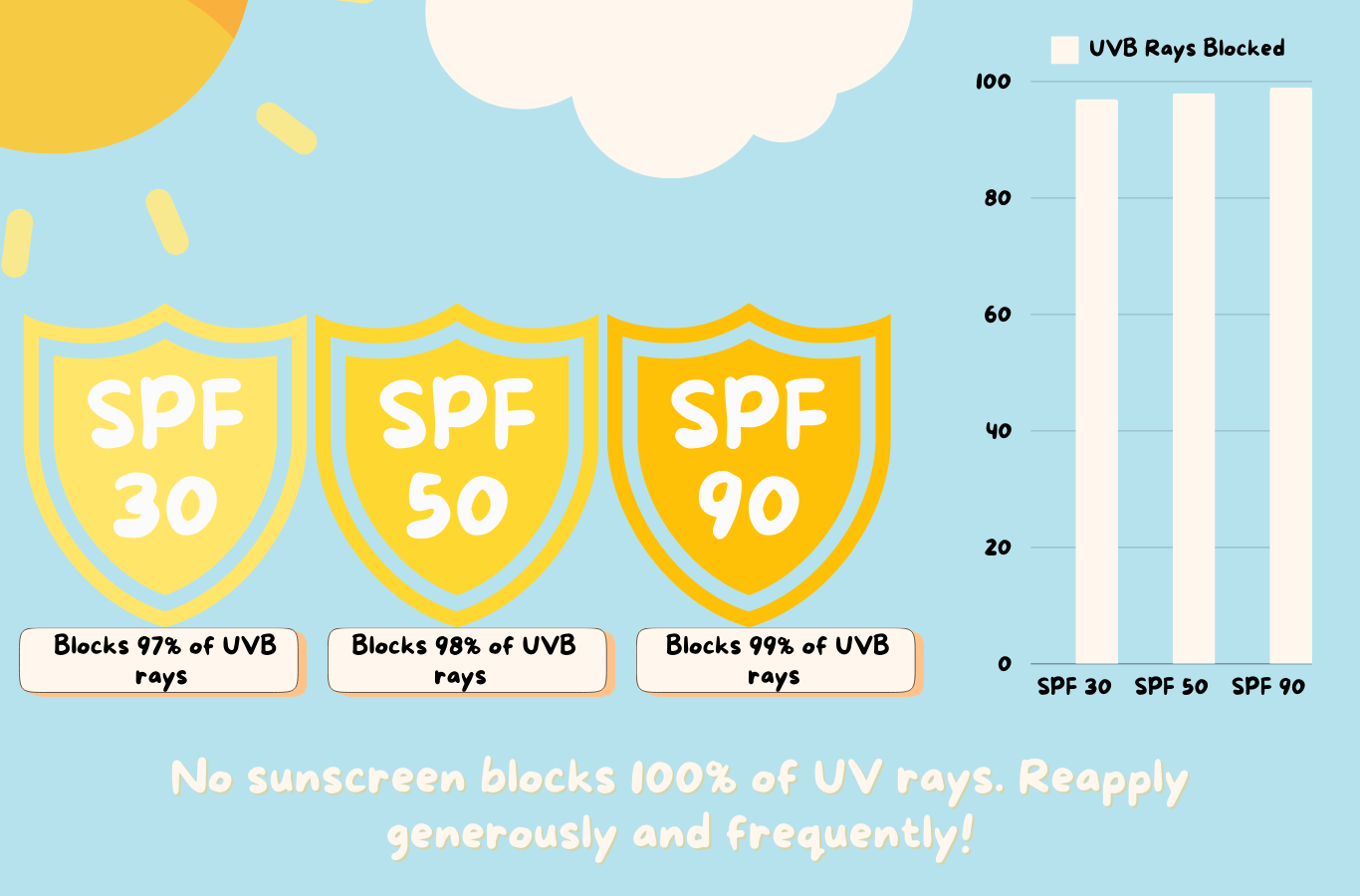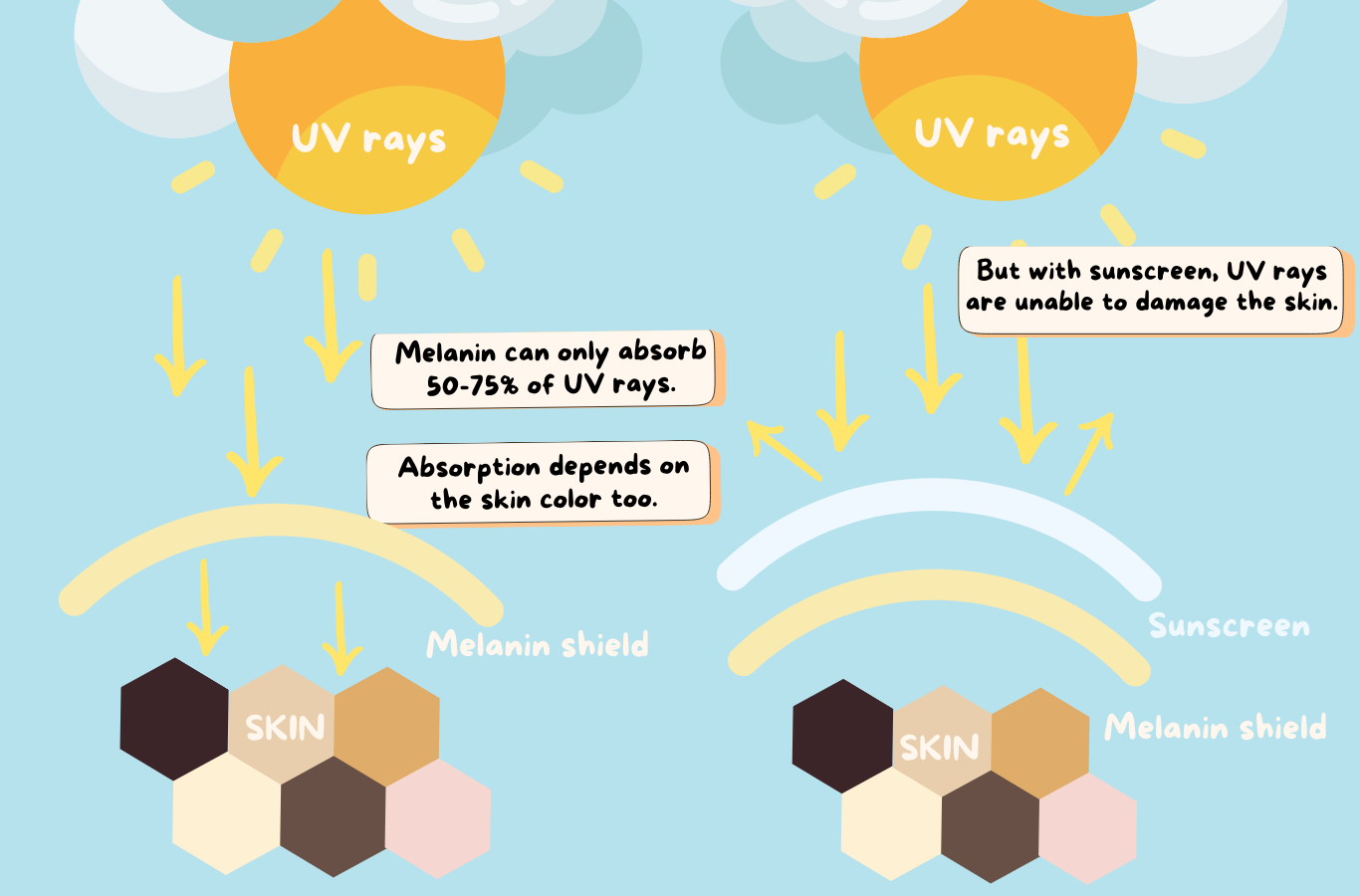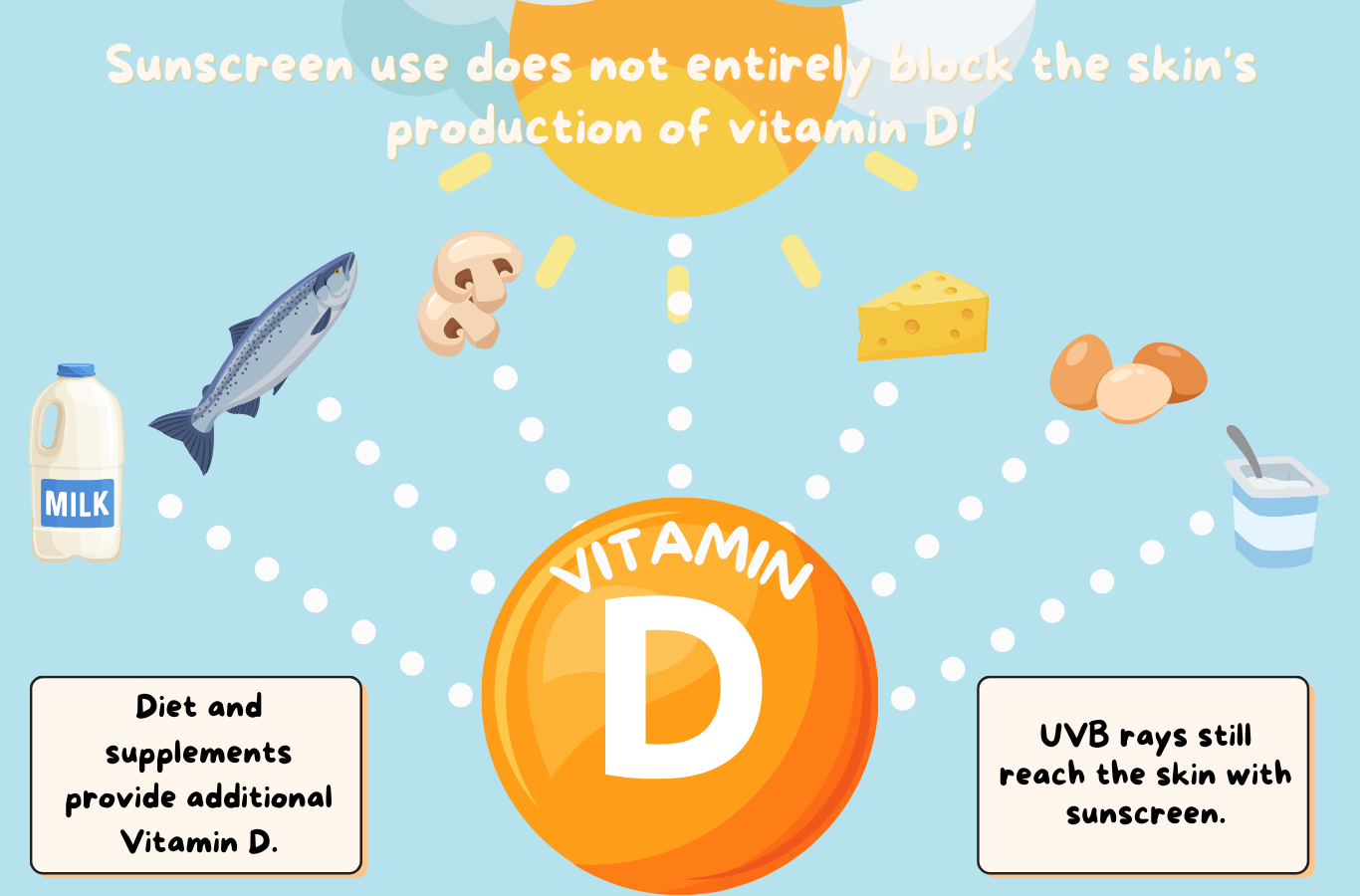In today’s blog, we’re going to be bustin’ myths about sunscreen so you can enjoy soakin’ in the Sun safely! Now, trust me, I get it – applying sunscreen might not be the most exciting part of your day, but, as we all know, it is crucial we try to protect our skin in the best way possible! That’s why we are going to take a deeper look at five popular sunscreen myths and use our STEM knowledge to either debunk or confirm these claims, ensuring you have all the facts necessary to keep your skin heathy and safe all summer long. 
Myth #1: You Don’t Have to Wear Sunscreen if It’s Cloudy Out
FALSE! This is a rather common misconception, but it’s important to remember that, although you might not see the Sun, up to 80 percent of UV rays can pass through clouds. It’s UV radiation that is responsible for skin damage, meaning your skin is still at risk even on cloudy days.
UV rays consist of two types of rays: UVA and UVB. UVA rays can penetrate deeper into the skin, causing premature aging and long-term cellular damage, while UVB are the primary cause of sunburn. So, while clouds may block the sunlight, they have a harder time blocking out the UV rays, which makes wearing sunscreen on cloudy days crucial in protecting your skin.
Myth #2: The Type of Sunscreen Doesn’t Matter
FALSE! There are two main types of sunscreens: chemical and mineral. While chemical sunscreens absorb UV radiation through active ingredients such as avobenzone and octinoxate, mineral sunscreens, containing zinc oxide or titanium dioxide, act as physical barriers by reflecting the UV radiation away from skin.
Broad-spectrum sunscreens shield against both UVA and UVB rays, offering the ultimate protection. However, it is also important to consider which type of environment you are in and if you will be swimming. Many sunscreen formulas contain chemicals that can be harmful to marine ecosystems, such as oxybenzone and octinoxate. It is important for you to research and use reef-safe alternatives that contain minerals that are less harmful to coral reefs if you will be swimming in the ocean.
Myth #3: A High SPF Protects the Skin Better
FALSE! It’s a common belief that a higher SPF (sun protection factor) offers more protection from the Sun; however, the SPF scale is not linear. This means that the SPF number doesn’t correspond to a proportional increase in the percentage of UV rays blocked. For example, SPF 30 blocks out about 97 percent of UVB rays, while SPF 50 blocks 98 percent, and SPF 90 blocks 99 percent. So, as you can see, the incremental increase in protection is minimal amongst the differing SPFs.
Moreover, no sunscreen can block 100 percent of UV rays, and the effectiveness usually depends on the proper application and reapplication. Sunscreen should be applied generously and frequently, especially if you are swimming or sweating. And, just because it is a higher SPF doesn’t mean that you can skip the reapplication step!
Myth #4: If You Have Dark Skin, You Don’t Need to Wear Sunscreen
FALSE-ish! While melanin, the pigment responsible for skin color, offers some natural UV protection by absorbing and dissipating UV radiation, it is not sufficient in preventing all types of skin damage. This natural defense can still allow for your skin to experience UV-induced issues, such as burning and hyperpigmentation.
Sunscreen is essential for everyone, regardless of skin tone, to provide a consistent and reliable layer of protection against harmful UV radiation. Melanin can only offer so much defense, and therefore, another means of protection is necessary!
Myth #5: Wearing Sunscreen Prevents Vitamin D Absorption
FALSE-ish! This is a frequent concern and argument that we see, and while sunscreen does reduce the skin’s production of vitamin D, it doesn’t block it entirely. UVB rays, which are necessary for vitamin D synthesis, are still absorbed by the skin to some extent even when sunscreen is applied.
Research suggests that regular use of sunscreen allows for sufficient UV exposure to maintain adequate vitamin D levels. Moreover, vitamin D can be sourced from diet and supplements, such as fatty fish and fortified foods (milk, tofu, yogurt, and so on), showing that it is feasible to balance sun protection and vitamin D intake.
By using our STEM insights, we were able to debunk many of these popular sunscreen conspiracies and highlight the importance of informed sun protection practices! Whether it’s understanding the significance of sunscreen on a cloudy day, recognizing the benefits of the different types, or understanding SPF rating, we’ve proven why sunscreen really does matter. No matter the weather or your skin type, consistency is key to keeping your skin healthy and safe all summer long. So, lather up, stay informed, and enjoy the Sun – responsibly!
MORE RESOURCES:
- Why You Need to Wear Sunscreen Regardless of the Weather
- What You Should Know about Sunscreen, SPF, and Protecting Your Family
- Ask the Expert: Does a High SPF Protect My Skin Better?
- Why Sunscreen Is an Important Tool for People of Color
- How to get vitamin D without spending too much time in the sun

